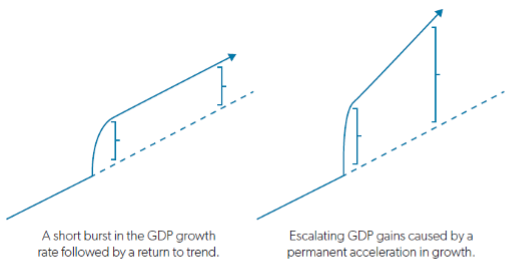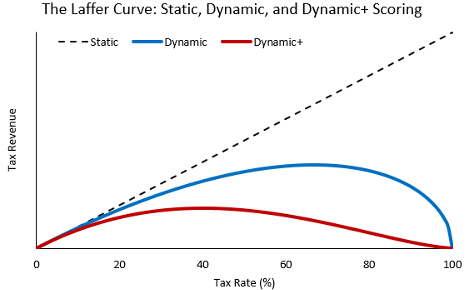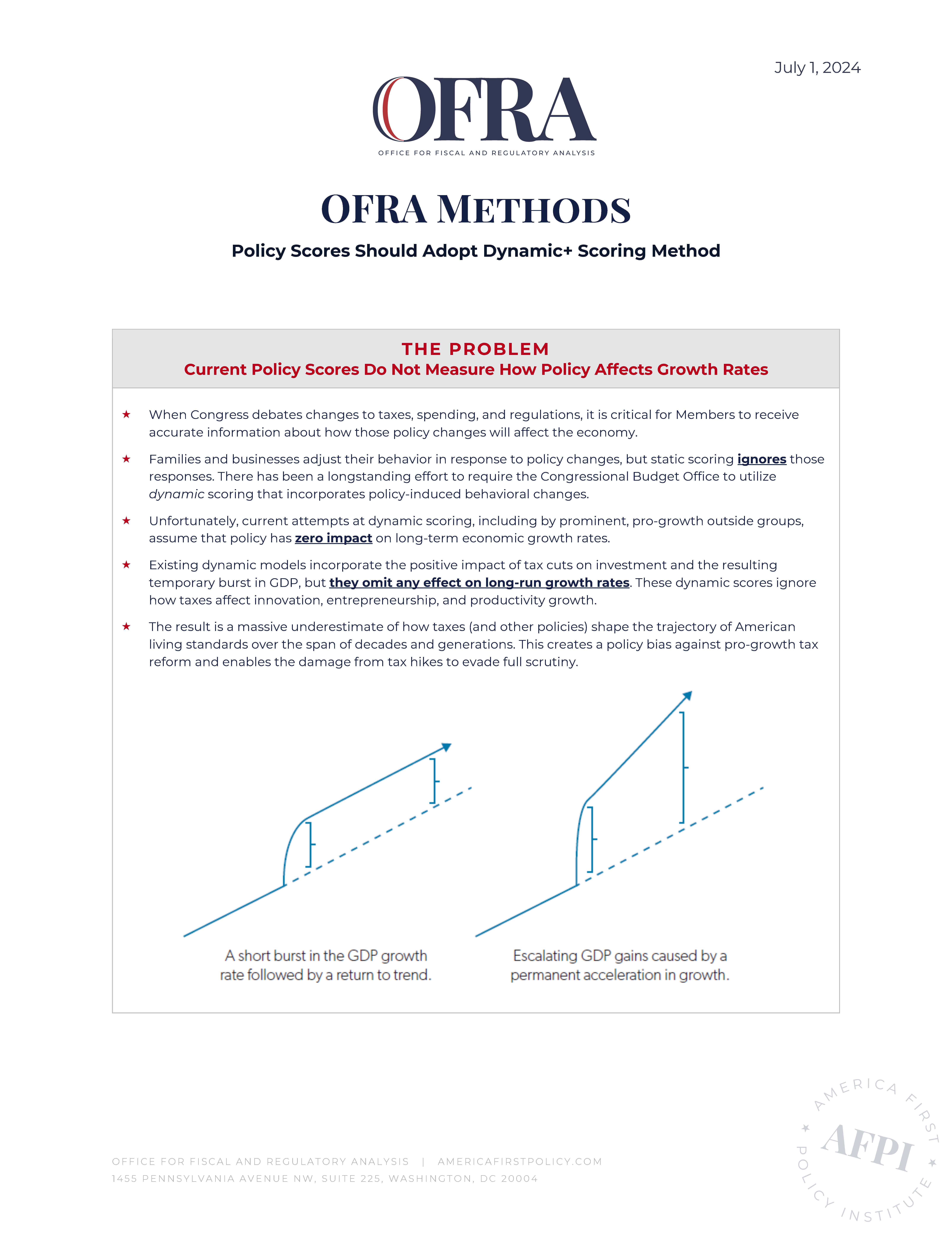Aaron Hedlund, Ph.D.
July 1, 2024
Policy Scores Should Adopt Dynamic+ Scoring Method
THE PROBLEM
Current Policy Scores Do Not Measure How Policy Affects Growth Rates
- When Congress debates changes to taxes, spending, and regulations, it is critical for Members to receive accurate information about how those policy changes will affect the economy.
- Families and businesses adjust their behavior in response to policy changes, but static scoring ignores those responses. There has been a longstanding effort to require the Congressional Budget Office to utilize dynamic scoring that incorporates policy-induced behavioral changes.
- Unfortunately, current attempts at dynamic scoring, including by prominent, pro-growth outside groups, assume that policy has zero impact on long-term economic growth rates.
- Existing dynamic models incorporate the positive impact of tax cuts on investment and the resulting temporary burst in GDP, but they omit any effect on long-run growth rates. These dynamic scores ignore how taxes affect innovation, entrepreneurship, and productivity growth.
- The result is a massive underestimate of how taxes (and other policies) shape the trajectory of American living standards over the span of decades and generations. This creates a policy bias against pro-growth tax reform and enables the damage from tax hikes to evade full scrutiny.

THE SOLUTION
Implement Dynamic+ Policy Scoring
- Static scoring ignores all economic feedback from policy. Dynamic scoring allows the level of economic activity to respond to policy. Dynamic+ scoring allows growth to respond to policy.
- A case-in-point is the Laffer Curve, which measures the relationship between tax rates and tax revenue, taking into account how the tax base responds to tax policy changes.
- Static scoring pretends that the Laffer Curve does not exist, assuming that people do not adjust their behavior in any way to taxes. People will work and invest the same even with 100% rates.
- Traditional dynamic scoring recognizes that hours worked and investments respond negatively to punitive tax rates but ignores many other margins of behavioral adjustment. As a result, the economy can still sustain high tax rates with relatively modest economic damage.
- Dynamic+ scoring allows growth to respond to tax policy changes as people decide whether to enter the labor market, acquire new skills, start businesses, and engage in innovation.
- Dynamic+ scoring reveals that tax hikes do not raise as much money as advocates claim, that tax hikes create more damage than advertised, and that tax reform is a potent tool for growth.

